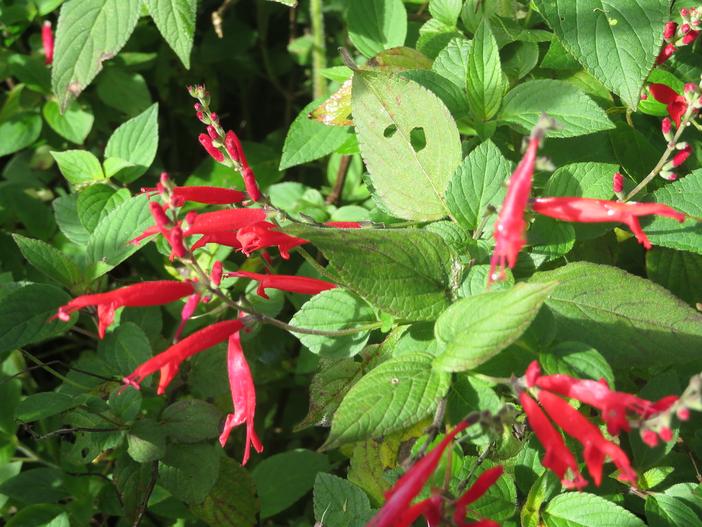Pineapple Sage
(Salvia elegans)
Pineapple Sage (Salvia elegans)
/
/

Forest and Kim Starr
CC BY 2.0































Estimated Native Range
Summary
Pineapple Sage is valued for its aromatic leaves and vibrant flowers, which make it an excellent choice for sensory gardens, herb gardens, and as a border plant. It is also used in culinary applications, with the leaves being edible and often used to flavor drinks and dishes. This plant thrives in full sun to part shade and prefers well-drained soil. It is drought-tolerant once established but benefits from regular watering during prolonged dry spells. While generally pest-resistant, Pineapple Sage can be susceptible to whiteflies and spider mites in hot, dry conditions. It is not known to be invasive and is relatively easy to maintain, making it suitable for a variety of garden settings.CC BY-SA 4.0
Plant Description
- Plant Type: Herb
- Height: 3-4 feet
- Width: 2-3 feet
- Growth Rate: Moderate
- Flower Color: Red
- Flowering Season: Summer, Fall
- Leaf Retention: Semi-deciduous
Growth Requirements
- Sun: Full Sun
- Water: Medium
- Drainage: Slow, Medium
Common Uses
Bee Garden, Bird Garden, Border Plant, Butterfly Garden, Deer Resistant, Drought Tolerant, Edible*Disclaimer: Easyscape's listed plant edibility is for informational use. Always verify the safety and proper identification of any plant before consumption., Fragrant, Groundcover, Hummingbird Garden, Low Maintenance, Potted Plant, Rabbit Resistant, Showy Flowers, Street Planting
Natural Habitat
Native to oak and pine woodlands in the highlands of Mexico and Guatemala
Other Names
Common Names: Pineapple-Scented Sage, Tangerine Sage
Scientific Names: , Salvia elegans, Salvia elegans var. sonorensis, Salvia rutilans, Salvia incarnata, Salvia longiflora, Salvia camertonii, Salvia microcalyx, Salvia microculis, Salvia punicea,
GBIF Accepted Name: Salvia elegans Vahl